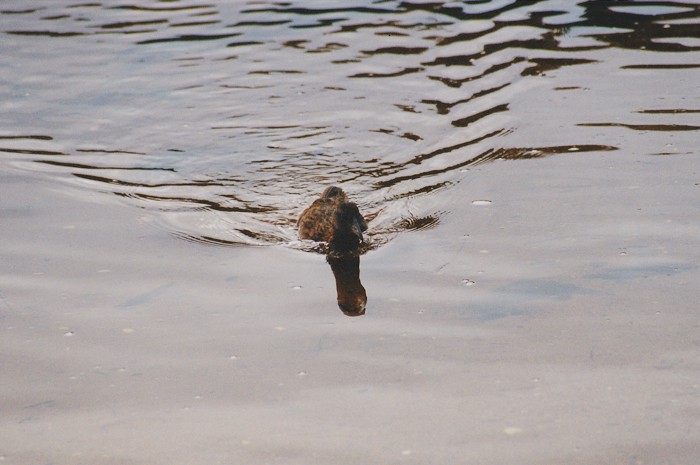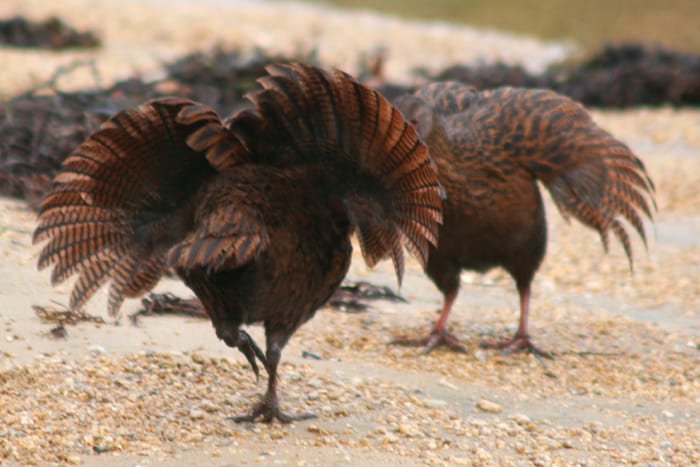Weka (Woodhen) – Weka, note the beak. I have seen one dispatch a large rat with a single strike
Spend anytime in New Zealand forest and you will surely come across a weka. Flightless, agressivly omniverous and forever hungry they are the “wide boys” on our forest floors. Insects and forest invertibrates are their “bread & butter”, but woe betide any nestlings, slow or injured creatures they find. And they will climb into trees for fruit and anything else they can find.
I remember once quitely watching a weka completely strip the lunch box of a tourist asleep on the sand at Sydney Cove on Ulva Island . The box was literally in front of the womans face, perhaps 20 cm away. “Larry the Dip” could not have done a better job. We have several ground and close to ground nesting species in New Zealand, which perhaps seems a little odd, with a detirmined nest robber out and about. But the weka has a reletively poor sense of smell and so with a little camoflage or as in the case of the Variable Oystercatcher who nests right out on an open shore , a highly developed sense of agression, nests do survive.
They are addicted to shiny things, and in fact the word “weka” has crept into New Zealand English as someone who has little scruples about other peoples property or is a hoarder of junk.
Weka are territorial and have real battles with interlopers about ownersip of preferred “pitches” and I use the word advisedly, as they will frequent areas where people have food.Life in weka society can be quite ugly, and we have watched a hens two grown offspring systematically set aboutdispossessingher of a preferred territory. It was quite violent and had she not departed I don’t doubt she would have been killed.

Although a land bird and with claws rather than webbed feet they are superb swimmers and will happily undertake swims of several hundred metres. On Stewart Island clutches seem to be generally two, although I have seen three in a family. But years ago in Westland families seem to generally be 6 or 7… but a different sub-species of course. If there is lots of food about, and population numbers low, weka will nest twice and apparently even 3 times a year.
They will live rightamonghouses, and can be the bain of a gardners life, pulling out young and not so young plants.

Peter Tait
Peter Tait is a professional nature guide based at Stewart Island, New Zealand, and he works primarily on Ulva Island Open Sanctuary. Peter has been resident on the Island for over 40 years and was one time Forest Ranger in Charge of Stewart Island. Fishing followed forestry and was in turn followed by Talisker, a 17m charter yacht. He is qualified Skipper Deep Sea Fishing Vessel. In addition to guiding Peter and his wife Iris are hosts at Sails Ashore Lodge.


Leave a Reply